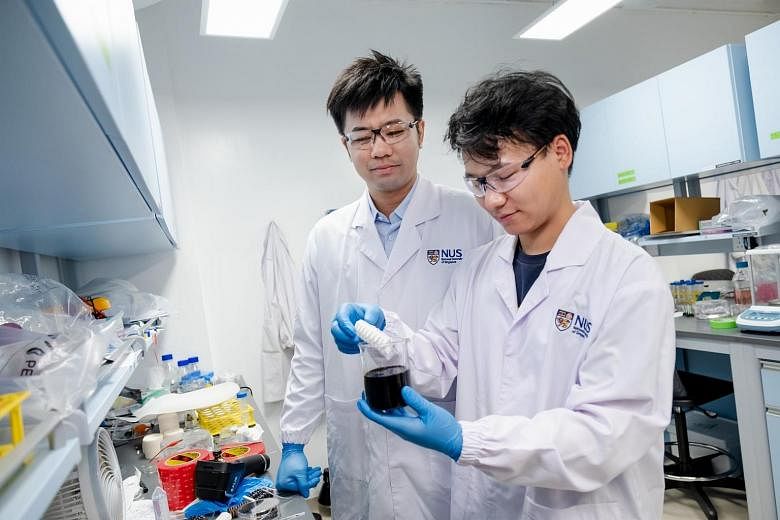SINGAPORE - A National University of Singapore (NUS) team has developed a new metallic material lighter than paper and plastic, but electrically conductive, allowing for more flexible robots to be created.
The material could boost cutting-edge research around the world on lightweight robots, which have been likened to "origami" robots because they are made of thin sheets and have the ability to twist and fold to adapt to their environment.
Such state-of-the-art robots are used in areas where their flexible nature gives them an advantage over more rigid conventional counterparts, such as search and rescue missions and in administering injections.
Team leader Assistant Professor Chen Po-yen, who is from the department of chemical and biomolecular engineering at the NUS Faculty of Engineering, said balancing weight with functionality is a familiar headache for people in the robotics field.
While additional electrical components are often required to make a robot capable of performing a specific task, they make the robot heavier, which in turn requires more power to move.
But the power has to come from a larger and heavier battery, creating a vicious circle of ever-increasing weight and demand for power, he said.
"That is why researchers like us are always looking to break this cycle by making lighter robots which will then require less energy and small power sources," added Prof Chen on Monday (Nov 25).
The new material, which has not been named, is made by combining platinum with ash. Because it is electrically conductive, robots can communicate wirelessly with operators or other robots without the need for additional sensors that weigh down the robot.
Not only can soft robotic limbs communicate information in real-time without the need for external sensors, but the robots could also be up to 60 per cent lighter than their conventional counterparts.
Earlier this year, researchers from Harvard and the Massachusetts Institute of Technology (MIT) developed a robotic limb that uses a soft origami gripper to pick up a variety of objects including wine glasses and fruit.
Conventional robotic limbs with their rigid fingers would damage the objects.
The material could also help origami robots to operate in harsher environments during search and rescue missions, as it can withstand 800 deg C, and also has the capability to heat itself to prevent icing damage in cold environments.
Prof Chen had first conceived the idea for the material in 2017, spending the next two years with the other 10 members of his team developing the process to produce the metallic material.
The team is now focusing on refining its production process with an eye on commercialisation in the long term.
"Apart from platinum, we are now exploring other metals such as copper to keep the production cost low so it can be more attractive for commercial application," said Prof Chen.
"We are also looking at incorporating different materials into the process for new functions, such as making the material serve as its own battery in self-powered robots."


